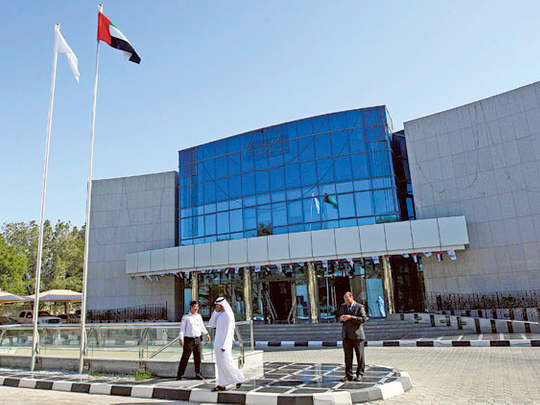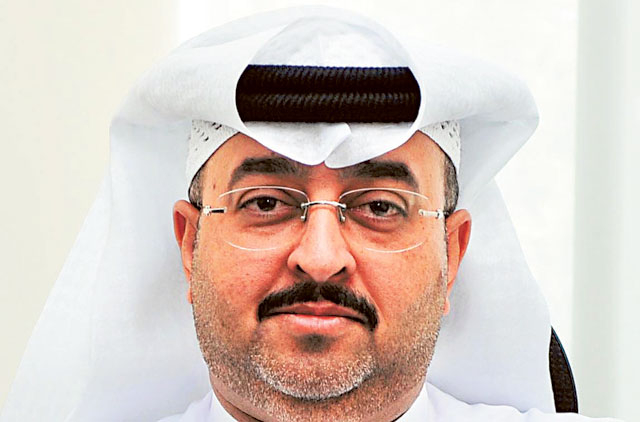
Abu Dhabi: The National Rehabilitation Centre (NRC) in Abu Dhabi, the leading de-addiction centre in the UAE, is treating 108 addicts at the moment.
The centre has 74 beds but does not have enough staff to deal with the high occupancy rate, Dr Hamad Al Ghaferee, centre general manager, told Gulf News in an exclusive interview.
The centre can accommodate up to 108 inpatients, he said. About 25-30 outpatients visit the centre daily, who include new and follow-up cases.
The centre offers three treatment programmes for eight weeks, 12 weeks and 16 weeks
Confidentiality is one of NRC’s priorities.
“Throughout the treatment, confidentiality is a priority; so no information of patients is shared with any agency. The patient is allocated to a team of a doctors, nurses, social workers and a psychologist.”
Could you give a brief description of NRC and its strategy?
Al Ghafree: As the leading de-addiction centre, it is tasked to meet the needs of all segments of the community while respecting cultural values.
As part of its strategy, it has incorporated the core values of respect, confidentiality of patients, empathy, community service and quality. The NRC was established in 2002.
You mentioned, among others, confidentiality in dealing with patients. Could you take us through the steps regarding how you handle patients from the start?
NRC has a secure toll-free phone number. When a patient calls, only highly qualified and trained NRC staff attend to the call. Keeping the confidentiality, the patient is allocated to a team of carers. Once patient’s file is opened, it can’t be accessed by any other staff at the centre but the treatment team concerned only. This is the culture at the NRC and we ensure that not even family members can access the information about the patient.
What about the difficulties or challenges you face while treating patients and after they’re discharged from the centre?
We don’t call them difficulties. Everyone [patients] is initially ambivalent about change because we all operate in a comfort zone. So if one is trying to change any behaviour like losing weight or quitting smoking, they need to work through what is now accepted and called “stages of change or cycle of change model. The components are pre-contemplation, contemplation, action, maintenance and relapse and the cycle starts again. You need to know where the patient is on that cycle. Common mistakes involve applying interventions that don’t suit the stage the patient is in. It leads to confrontation and resistance. Families may inadvertently and tirelessly work with a patient with advice and coercion when a patient is still not ready to contemplate change so risk losing their cooperation. Specialists apply specific techniques for each stage to resolve matters of ambivalence and resistance.
What role do families play in bringing and maintaining their loved-ones for rehabilitation?
Families are an essential part of the assessment and recovery process and yes, we invite families from the first interview and keep them involved in all stages of treatment and rehabilitation. They are educated about addiction as a disease and given information and assistance to enable the patient to avoid highly expressed emotions that may lead to relapse. Families work with the treatment team all the time.
Are there a set of standard stages patients go through when they are in treatment?
Patients are assessed by a specialist team as stated above. We apply a battery of internationally validated, structured tools to assess the severity of addiction which helps to place patients in the appropriate level of care. These are outpatient treatments for the mild cases, medically assisted withdrawals unit for the moderate and moderate to severe cases. The rehabilitation stage applies after completion of the initial phase. Initially our specialist treatment team provides intensive medical input for cases of overdose, withdrawals, medical complications of alcohol and drug use. When the patient is settled, they are transferred to the rehabilitation unit where evidence and practice-based rehabilitation programmes are available. These cater to patients, keeping in mind that patients need different emphasis at each stage of their recovery with more focus on motivation initially and relapse prevention as they are ready to leave.
Is the patient care in the NRC following benchmarked or international models?
As mentioned previously, we apply internationally validated and accepted evidence and practice-based models in our programmes, and invest heavily on training and affiliations with international bodies to provide the ultimate levels of care. The model is psychosocial and spiritual, and research supported to yield the best outcome. Of course, some patients will need medication but this is dictated by medical need and again there are medical principles that guide the process.
Could you briefly go over types of addictions that are prevalent in the UAE?
We treat patients with alcohol or substance abuse addictions. Substance abuse includes opiates like heroin or prescription opiates like Tramadol and the classic drugs such as cannabis, amphetamines and other prescription drugs such as sedatives or anticonvulsants etc.
After patients leave, do you maintain any follow-up procedures?
Our outpatient programme lasts 16 weeks. Beyond that we provide follow up for unlimited time as long as the clinician or patient finds it necessary and helpful. The inpatients voluntary programme is for eight weeks. Another Involuntary programme is for 12 weeks.
Does the NRC have a programme that ensures prevention of relapse in patients?
We engage patients in the Outpatient Department first and the multidisciplinary team would apply different techniques to ensure motivation and prevent relapse and drop out. Follow up is via an appointment system as in any hospital, with reminder calls. We ensure medical evidence is in the file following the visits via toxicology tests through our own NRC specialised state-of-the- art laboratory that tests for all known substances of abuse. This is a medico-legal requirement and again the results are kept confidential and only used within the safe therapeutic milieu.
Have you come across unusual cases of substances abused in addiction?
Unusual substances may be found in toxicology tests and currently there is universal attention to synthetic cannabis, stimulants such as bath salts, and mephedrone.
After the patient is cured what do you do to really integrate him or her back into the society?
This is very important as we are raising awareness about addiction as a chronic disease and a medical condition. You would not expect a doctor to issue a certificate of cure to a diabetic or an asthmatic or hypertensive patient. Similarly we would issue medical certificates of completion of our programme as the illness is episodic and periods of stability vary from very long abstinence for years or a very short one measured in days. This is the nature of the condition and no cure has been found in medicine for addiction to drugs.
Approximately, at what age do patients abuse substances and become addicted?
An international trend has been observed that the age of initiation of substance use is falling. Specialists find more adolescents and even children who are using drugs. That is now our target of future programmes as this is the age where prevention efforts yield maximum benefit. Nevertheless, it is also a fact that addiction may take years to show its ugly face of dependence as opposed to recreational use. Most patients would be in their late teens and early twenties.
What are the most harmful drugs that are abused?
They all are harmful but some cause more harm than others, specially ones that are injected [mainly heroin] as they carry the risk of blood-borne viruses such as hepatitis B and C and even HIV (Human immunodeficiency virus), which causes AIDS [Acquired immune Deficiency Syndrome]. Others like alcohol cause dangers of road traffic accidents, medical complications in the body, like the liver or the gastrointestinal tract, and neuropsychiatric sequel in withdrawals like DTs (Delirium tremens — a medical condition due to alcoholism), and in the chronic damage to the liver, brain [dementia] and nutritional deficiencies. It is also important to note that although cannabis use is a very contentious subject and a substance perceived as safe, there is now abundant evidence about its addiction potential and a gambit of damage that it can cause like mental illness and medical complications.
Any last words of advice to the youth?
This is a multi-level advice about prevention. First to seek spiritual fulfilment in the teachings of our faith, Islam, and our Emirati values protect them by keeping close to their family, healthy peer relationships and safe leisure pursuits. Never experiment with drugs as many of these substances are addictive from the first dose.
Next step is never delay seeking help. It is much more likely that interventions will be successful if we see patients in the early stages. Finally there are now evidence-based interventions both medical and psychosocial that are very successful in treating addiction and our government has invested heavily in providing specialist and expert care through the NRC.













